How do you specify marine cable? Or marine cables specification
The marine cable should have to withstand a wide variety of
following extreme environmental conditions
- High ambient temperature
- Humidity
- Salinity
- Fire
- Oil & chemical pollutants
- Cold atmosphere
- Corrosion and oxidation
What are the parts of marine cable?
 |
| Image Credits: wiki.openelectrical.org |
- Conductor and Conductor Screen
- Insulation and Insulation Screen
- Conductor Sheath
- Filler
- Bedding or Inner Sheath
- Individual Screen for Instrument Cables
- Drain Wire for Instrument Cables
- Overall Screen for Instrument Cables
- Armour
- Outer Sheath
How do you order the marine cable? Or how to order cable on ship?
Specify the following items when you order the cable
- Type of the cable. Example armour, Fire resistant cables, Flexible cable and Flame retardant cables
- Type of insulating material of the cable
- Type of Sheathing material
- Voltage rating of the cable
- Type of the conductor
- Conductor size
- Number of core
- Length of the cable
- And the colour of the cable
Example:
Unarmoured, XLPE, 0.6/1KV, Tinned copper conductor 2.5MM2
X 4C, PVC Sheathing, Length 50 meters, and black colour
What is the difference between the wire and cable?
The wire is a single conductor and a cable is a group of
conductors.
Why is Marine wire tinned?
The tinned wire is protected from corrosion and vibrate
Providing very flexible
What the difference is between bare copper and tinned copper?
The copper is averagely resistant to corrosion when it is
used in wet environments or places with high humidity
Tinned copper is protected from resist humidity and high
temperatures
What are the types of Cables used on ship?
- Control cables
- Power cables
- Data transmission cables
- Communication cables
- Instrumentation cables
- Armoured Cables
- Unarmoured Cables
- Braided Cables
- Screened Cables
- Single-core cables
- Multi-core cables
- Fire-resistant cables
- Flame retardant cables
- Thermocouple cables
- Twisted Pair
- Co-axial cables
Marine Flame-retardant cables
- The sheath materials for the cables being organic plastic compounds will burn in the event of a fire but it will not sustain or spread a fire.
- Most cable materials achieve this property by developing chlorine gas and acid fumes to smother the flame.
- PCP and CSP produce chlorine gas and acid fumes when they burn.
- But a dense black smoke will always result in the event of cables catching fire.
- It is a classification requirement that all cables for the marine application must be Flame-Retardant
What is the Marine Fire-resistant cable and uses?
- Fire-resistant cables are superior to Flame-Retardant cables and will not catch fire easily.
- Fire-resistant cables are generally used for important services like
- Important Control circuits
- Emergency lighting
- Fire detection and alarm circuits
What is Armouring cable?
- Basket-weave, wire braid armour of galvanized steel, tinned phosphor bronze or aluminium
- Provides mechanical protection, also as a static shield to reduce electromagnetic interference (in communication and instrumentation sys)
- Grounded directly or indirectly to the hull
- The non-magnetic properties of phosphor bronze are preferred for the single-core cables.
- The wire braiding also acts as a screen to reduce interference (caused by magnetic fields) in nearby communication and instrumentation circuits.
Voltage Grading of Cable
Voltage grade is (Uo/U) where Uo is the phase (conductor) to
earth voltage and U is the phase (conductor) to phase (conductor) voltage
For Earthed system -> kV/1.75 x kV
Unearthed (Isolated or insulated Neutral) system-> kV/kV
Example:
- For 3.3KV 3ph earthed neutral system, the rating will be 1900V/3300V
- For 3.3KV insulated systems the cable rating would be 3300/3300V.
Current rating of cables
- The current rating of a cable is that current the cable is able to carry continuously without the conductor temperature exceeding 80oC with an ambient air temperature of 45oC. (35oC rise).
- If the ambient temperature exceeds 45oC the cable must be de-rated (rating must be reduced).
- The cables are also de-rated if the cables are bunched together or enclosed in a pipe or trunking, which reduces the effective cooling.
Voltage drop in the cables
- For all the types of cables the size of the conductors required for a particular installation is estimated from standard rating tables.
- The voltage drop in cables from the main switchboard to the equipment (motors, appliances, etc.,) must not exceed 6% (in practice it is about 2%).
- Voltage drop becomes a problem only in very long cables.
- The cables installed must comply with both the current rating and the voltage drop limitation.
Electrical Cable Practice
- Cable end lugs are crimped and heat shrinking sleeve fitted over lugs to seal the cable.
- AC cables should contain all the three current-carrying conductors in a single cable to drop out the heating created by inductive effects.
- Cables in areas like galley are prone to damage by fumes, varying temperatures, water vapour, and grime. The sheaths of such cables must be heat, oil and chemical resistant and also flame retardant.
- Electromagnetic interference: To minimize radiation and pickup of spurious signals when running adjacent to a receiving antenna is to ensure that shielded /armoured cables only are used. The armoured braid is grounded.
- Cable tags: Moulded metal tags are used to identify the cables all over the ship. The tags are located in the DP panels and the components. All the ship electrical equipment’s must have a breaker or fuse to protect the wiring as well as the equipment.
Important SOLAS regulations relevant to the marine cables
- All electrical cables and wiring outermost to the equipment shall be at least of the flame retardant type cable
- Cables and wiring serving the necessary or emergency power lighting, internal communications or signals shall so far as possible routed clear of the galleys, laundries, machinery spaces exposed to the high temperature and other high fire risk areas.
- Fire pump to ESB connecting cables should be a fire the resistant type where it passes through high fire risk areas.
- Cables and wiring shall be installed and supported in such a manner as to avoid chaffing and other damages.
- Glands fitted to bulkheads should be allowed for expansion and weathertight. Watertight bulkheads must be stabled by the suitable gland.
How do you specify the marine Conductor?
Conductors of marine cables are usually annealed, tinned,
copper (ATC) which may be circular or shaped.
Annealing improves its flexibility
Tinning prevents the formation of oxides.
Standard sizes of Power Cables
1.5, 2.5, 4, 6, 10, 16, 25, 35, 50, 70, 95, 120, 150, 240, 300, and 400
Sq.mm
Standard sizes of Control cables
Marine Cable Insulation
Cables have insulation, the thickness appropriate to the
system voltage rating.
Insulation materials are generally organic plastic compounds
like
- Butyl Rubber- tough, resilient, has good heat, ozone and moisture resistance
- Ethylene Propylene Rubber (EPR) – Supersedes Butyl Rubber in resistance to moisture and ozone.
- Cross-linked Polyethylene (XLPE) – has inferior mechanical and thermal properties than EPR.
Insulation Class
CLASS
|
INSULATION MATERIALS
|
MAX.TEMP (C)
|
Class
A
|
Reinforced Class Y materials such as Cotton, Silk, and Paper
|
105
|
Class
B
|
Mica, glass, fibre
Inorganic material is hardened with adhesives
|
130
|
Class
C
|
Mica, porcelain, glass, and quartz
Inorganic material 100%
|
180
|
Class
E
|
Polyurethane, epoxy resins, polyethylene terephthalate
|
120
|
Class
F
|
Upgraded B class materials such as Mica, glass, fibre
|
155
|
Class
H
|
Inorganic material such as
(elastomer, mica, glass, fibre) glued
with silicone resin
|
180
|
Class
Y
|
Made of cotton, silk or paper
|
90
|
Types of the marine cable Insulating Materials
- PVC - Polyvinyl Chloride
- PE - Polyethylene
- XLPE - Cross-Linked Polyethylene
- EPR - Ethylene Propylene Rubber
- LSF - Low smoke and fume
- PTFE – Poly tetra fluoro ethylene
- TPR - Thermoplastic Rubber
- SBR - Styrene Butadiene Rubber
- CSPE – Chloro sulfonated Polyethylene
- Neoprene - Polychloroprene
- Silicone
- Rubber
The typical insulating material used on the ship
- XLPE Insulated Power Cables
- Halogen Free Low Smoke Power Cables
- Halogen-Free Low Smoke Fire Resistant Power Cables
- XLPE Insulated Telecommunication Cables
- Halogen-Free Low Smoke Fire Resistant Telecommunication Cables
What is the Insulation Resistance?
Resistance to current leakage through the insulation material
What is the Dielectric strength of the cable?
The ability of insulation to withstand potential difference-
expressed in volts at which insulation fails
Marine Cable Sheath
Protects the insulation from damage and injury and not classed as an insulant.
Should be resistant to heat, oil, chemical
Should be flame retardant, tough and flexible
A cable may
be single or double-sheathed.
Polychloroprene
- PCP or neoprene is a general sheath material
Chlorosulphonated
polyethylene (CSP or Hypalon) supersedes PCP. Offers good resistance to cuts
and abrasions, resists weather and ozone, acid fumes and is flexible
Example:
- PVC
- Thermoplastic Polyolefin Halogen-Free Compound - PO SHF1
- Thermoplastic Polyolefin - SHF1
- Cross-Linked Polychloroprene Rubber - CR SE1
- Low Smoke Zero Halogen compound - LSZH compound
Temperature ratings of the Marine cable
- A continuously rated the marine cable will eventually reach a steady temp.
- Heat in windings and arising from friction dissipates at same rate as generated
- Temp rise = steady running temp – incoming air temp
- Marine cable overheat may be due to – overloading, dirty internals, reduced airflow, incorrect voltage/frequency
- The maximum hot-spot operating temperature is reached by adding the rated ambient temperature of the machine (often 40°C), a temperature rise, and a 10 °C hot-spot allowance.
- Insulation does not suddenly fail but useful operating life declines rapidly
- A rule of thumb is a halving of life for every 10 °C
What is the effect of Temperature Rise on the marine cables?
- The temperature difference of 5 degree Celsius between phases – a potential problem
- The temperature rise of 10 degree C above normal running temp – life of insulating material halves
Marine Cable Termination
Cable
sockets (lugs) are either soldered or more often crimped onto each wire by a
compression tool (Hand or hydraulic)
Cable
sockets must be securely attached to the appliance by well-chosen
screws/bolts/spring washers etc. A loose terminal will become a source of
localized overheating.
What is the Cable Gland?
Cable gland
serves to anchor the cable to the TB/Panel/Equipment so that the termination is
relieved of any external stress like a pull, vibration, etc.
It is in three parts – gland body with standard electrical
thread, compression ring, backing nut
Cable gland
has a rubber bush, plate washers and check nut and helps to make the
termination watertight and to earth the armouring of the cable.
The glands
must be matched to the size and type of cable.
A cable gland maintains – insulation, protection, water
tightness
What are the Types of marine cables Glands?
Single
Compression Glands
This types
of the gland are used to Grip the cable outer sheath.
There is no
cone ring and cone
Used on
indoor and outdoor (average climatic condition) electric panels.
Double
Compression Glands
For Cables
terminating to outdoor and watertight indoor panels.
Double
compression glands come with cone ring and cone
It can be
used in armoured and un-armoured cables
It will
give electrical continuity through the armour
Explosion
Proof Glands
For Cables
terminating to explosion-proof equipment and cables passing through hazardous
areas
How to drying out the Marine cables?
Cables in
exposed and damp situations may develop low insulation resistance.
Cables can
be dried out by injecting a heating current from a current injection test or a
welding transformer.
The voltage
should be 30 – 50V and the current should not exceed the rating of the cable.
Temperature
rise to be below 30C
Temperature
and insulation resistance should be measured and recorded every hour
Final
readings of at least 20Megohms to earth and 100Meghoms between cores should be
expected.
Maine Cable Penetrations
When a single the cable is passing through a deck or bulkhead, it can pass through a pipe the gland which may be a single compression, double compression or explosion-proof
type depending upon the area of penetration (watertight, non-watertight or
hazardous area)
When a bunch
of cables of the same type (power, control, instrument, high voltage) pass
through coaming, the coamings should be compound filled (water-proof or
fire-proof) and sealed after cable laying.
MCTs (Multiple Cable Transits) can be
used for better aesthetics and sealing provided proper planning precedes cable
laying. The use of MCTs involves high capital expenditure.
Flame Test on Cables
- A standard 4 feet length cable is held vertically
- Burn by the flame of known strength
- If flame travels through full length – graded as flame extending
- If flame extinguishes – graded as a flame retardant
Important points-Cable laying on ship
- Positions in which cables are run should be such that cables aren't subjected to excessive heat and risk of mechanical damage.
- The runs should be so located that the cables are accessible for inspection and aren't exposed to the accumulation of water and oil
- Cables shouldn't be run under machinery or floor plates.
- Cables are always taken from the top of the cable boxes.
- Cables are attached to cable trays or steel plating to hold them in an upward direction
- Cable running or laying depends on the designed temperature of the cable.
- Cables in cold storage chambers should undergo the appropriate protected tube or conduit flanged at each end.
- Cables should be properly sheathed.
- Do not use dissimilar metals like brass screws or clips on lead sheaths.
- Galvanized supports should be avoided because it results in electrolytic action and corrosion.
- Where cables are exposed to the chance of mechanical damage, they must be properly protected by running them in heavy gauge steel conduits.
- Because of the various temperatures permissible with various kinds of insulation, cables intended for various operating temperatures must not be bunched together in a common clip, gland, or conduit.
- Sharp bends in cables must be avoided as they involve the risk of cracking or otherwise impairing the insulation and sheaths.
- Cable bend Radius: Radius at the within of bend should be 4 times OD of cables for cable diameter of 25mm and less.
- It will be 6 times when OD is quite 25mm or if the cable is armoured.
- Conduits are often galvanized or enameled. The strength of galvanizing and enameling should be sound and reliable.
- Conduits must be earthed and must be mechanically and electrically continuous across all joints and fittings.
- The joints and junctions should be ready to carry fault currents.
- Cables in the DC circuit can have the lead and return within the same conduit or in separate conduits, except for AC two-wire system, both phase and neutral should be within the same conduit.
- Cables are normally fixed on perforated trays.
- Trays should be properly protected against rust before installation.
- Rubber insulated cables without sheaths shouldn't be fixed with clips onto the trays. They must be installed in conduits.
- Bonding implies connecting the metal sheath of one length of cable to that of another in order that electrical continuity is maintained from one sheath to subsequent.
- Cables passing through watertight bulkheads should have watertight glands.
- Cable glands are preferred to be of non-magnetic material. These glands should a minimum of giving 10mm clearance all-round the gland or bush between the lead sheath and steel.
- The axial spacing between the cables shouldn't be up to 150mm.
- Similar precautions also are necessary where similar cables enter any steel enclosure.
- If a non-magnetic plate is employed, the opening within the steel bulkhead should be not up to 76mm between the sting of opening and therefore the center of the cable.
- In circuits involving single core cables in parallel per phase, all cables should be of equal length and therefore the same cross sectional area.
- Those cables concerning an equivalent phase should be as far as practicable alternated with those of other phases to avoid unequally distribution of current.
- In case of passenger ships where the main vertical zone bulkheads are pierced for the passage of electrical cables, the hearth the resistance of the bulkheads must not be impaired.
- Cable trunks passing from one deck or compartment to another place should be constructed as to not give passage for fire
- The positioning of cables must be such fire in any main fire zone won't interfere with essential services in the other main fire zone. This is often achieved by separating the most and emergency feeders passing through any zone, vertically and horizontally as widely as possible
Example of cable
type: 0.6/1 kV FR-FA-TPYCY
- 0.6/1 kV: Voltage rate
- FR-FA: Flame retardant and Fire resistant
- T: Three core conductor
- P: EPR Insulation
- Y: PVC sheath
- C: Galvanized steel wire braid
- Y: PVC protective covering
Care taken to the Marine Cables
- Cables fitted in main decks, machinery spaces and other exposed areas must be properly protected from injury and mechanical stresses.
- When hot repair work such as arc welding, gas cutting, etc. are carried out near the cables or on the bulkheads nearby, cables must be adequately protected from damage due to spark or molten metals, by covering with fireproof covers, sheets, etc.
- The securing of cables in cable trays must be proper. Cables must be protected from loose or vibrating metals to prevent chaffing or damage to the cable


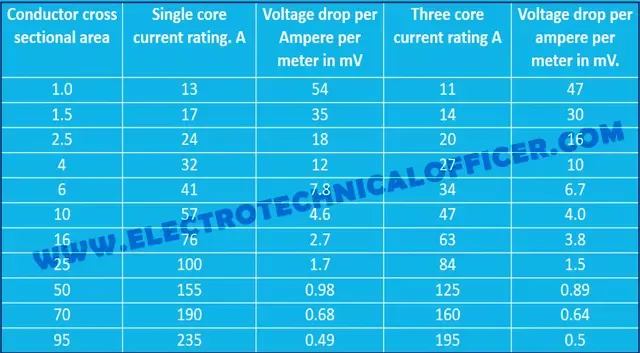
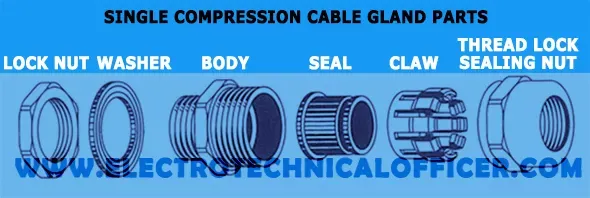
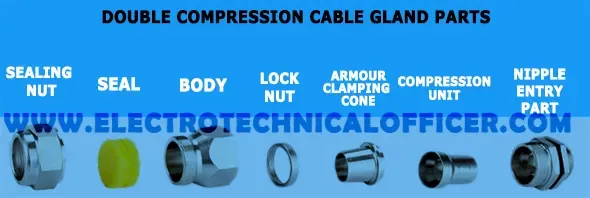

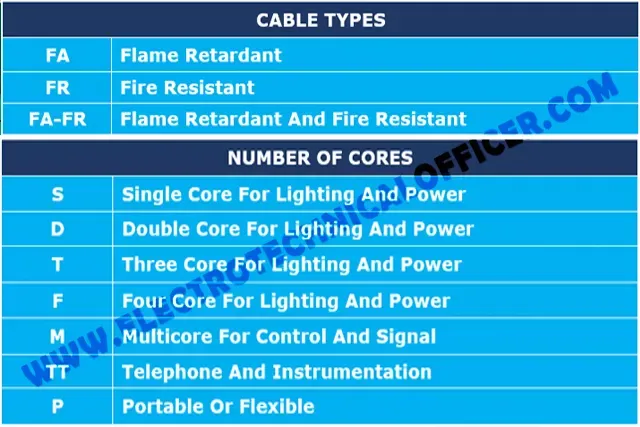
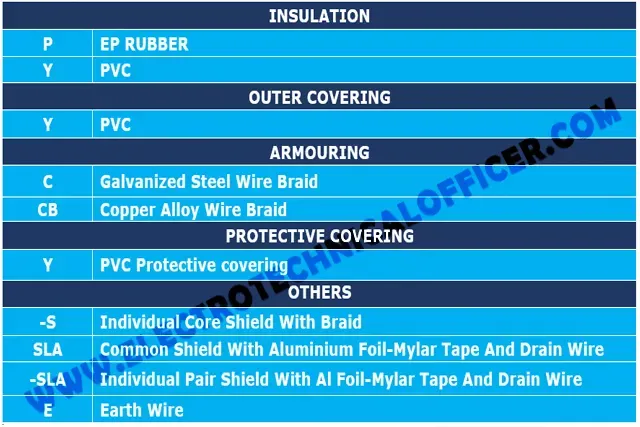












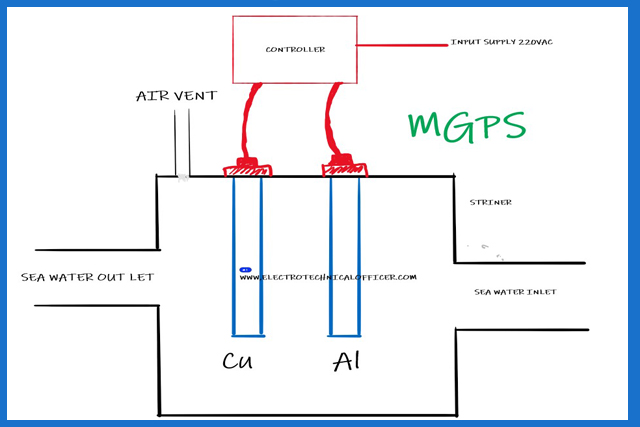
1 Comments
Thank you for the information 👍, every questions are covered related to Marine Cables.
ReplyDeleteWe love to hear your comments on this article, so that we may better serve you in the future.